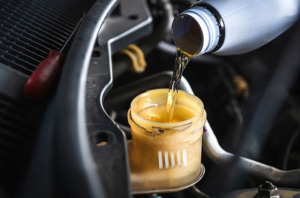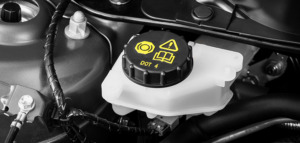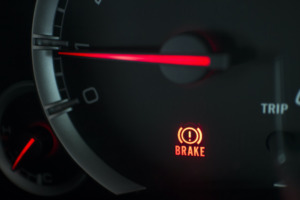Brake fluid is a critical component of your vehicle’s braking system, and maintaining the proper brake fluid level is essential for safe and efficient operation. Regularly checking your brake fluid level is a simple but vital task that every vehicle owner should be familiar with. In this comprehensive guide, we’ll take an in-depth look at how to check, maintain, and troubleshoot brake fluid levels in your vehicle, ensuring the safety of your daily commute.
Why Brake Fluid Matters

Brake fluid is a hydraulic fluid that transfers the force applied to your brake pedal to the brake calipers and drums. This hydraulic force is what ultimately slows down or stops your vehicle. Brake fluid operates under extreme pressure and temperature conditions, making it vital to the performance of your braking system.
The Importance of Brake Fluid Level Maintenance
Keeping your brake fluid at the correct level is essential for several reasons:
- Safety: Insufficient brake fluid can lead to decreased braking performance, potentially causing accidents.
- System Efficiency: Proper brake fluid levels ensure that your brakes respond quickly and effectively.
- Preventing Damage: Maintaining your brake fluid levels helps avoid costly brake system repairs.
Now, let’s delve into the detailed steps for checking and maintaining your brake fluid.
Step 1: Gather Your Supplies Before you start, make sure you have the following items ready:
- A clean cloth or paper towel.
- A flashlight (optional, but it can be helpful).
- A brake fluid reservoir cap (to avoid contaminating the fluid).
Step 2: Locate the Brake Fluid Reservoir The brake fluid reservoir is typically located under the hood of your vehicle, close to the brake booster or master cylinder. It is usually a translucent plastic or metal container with a screw-on cap.
Step 3: Inspect the Brake Fluid Reservoir Clean the top of the reservoir to prevent dirt or debris from falling into the brake fluid. Use a clean cloth or paper towel to wipe away any dust or grime. This step is crucial because contamination of the brake fluid can lead to brake system issues.
Step 4: Check the Brake Fluid Level Open the brake fluid reservoir cap by unscrewing it counterclockwise. Use caution as the brake fluid may be corrosive, so avoid spilling it on your vehicle’s paint.
Inside the reservoir, you’ll see a minimum and maximum level indicator. The brake fluid level should be between these two markers. If the level is below the minimum marker, it’s a sign that your vehicle might have a brake fluid leak, and you should consult a mechanic for a thorough inspection.
Step 5: Add Brake Fluid (if necessary) If the brake fluid level is below the minimum marker, you’ll need to add brake fluid to bring it up to the correct level. Make sure you use the type of brake fluid recommended in your vehicle’s owner’s manual. Never mix different types of brake fluid.
Gently pour the brake fluid into the reservoir, being careful not to overfill. It’s essential to keep the fluid within the specified range.
Step 6: Secure the Reservoir Cap After adding brake fluid, securely screw the cap back onto the reservoir. Make sure it’s tight to prevent any contamination or leakage.
Maintaining Brake Fluid Quality

Maintaining the correct level is essential, but it’s equally important to ensure the quality of your brake fluid. Over time, brake fluid can absorb moisture from the air, which can reduce its effectiveness. This is why it’s recommended to perform a complete brake fluid exchange every 2-3 years, or as advised in your vehicle’s maintenance schedule.
Performing a complete brake fluid exchange involves draining the old brake fluid from the system and replacing it with fresh, uncontaminated fluid. This process helps maintain the integrity of your braking system and ensures that the fluid can withstand the heat generated during braking.
Troubleshooting Brake Fluid Issues

While regular maintenance and checking can prevent many brake fluid problems, it’s also essential to be aware of potential issues. Here are some common brake fluid-related problems and how to address them:
- Brake Fluid Leak: If you notice a sudden drop in brake fluid levels, it could be a sign of a leak. In this case, it’s crucial to have your vehicle inspected by a professional mechanic immediately.
- Brake Fluid Contamination: Brake fluid can become contaminated by water or other substances. Contaminated brake fluid can lead to reduced braking performance. If you suspect contamination, consult a mechanic for a brake fluid exchange.
- Low Brake Fluid Warning Light: Many modern vehicles have a warning light that illuminates when brake fluid levels are low. If this light comes on, it’s time to check your brake fluid and add more if necessary.
Regularly checking your vehicle’s brake fluid level is a simple yet critical maintenance task. It ensures that your vehicle’s braking system operates safely and effectively. If you ever have concerns about your brake fluid level or notice a sudden drop in the fluid, consult a professional mechanic for a thorough inspection to address any potential issues promptly. Remember to follow your vehicle’s owner’s manual for specific recommendations and guidelines regarding your brake fluid. Additionally, periodic brake fluid exchanges are essential to maintain the quality and performance of your braking system, keeping you and your passengers safe on the road.
